Metal roofing offers durability and sustainability but presents challenges like higher initial costs and noise. In this exploration of metal roofing pros and cons, we provide clear insights to help guide your roofing choice without unnecessary complexity.
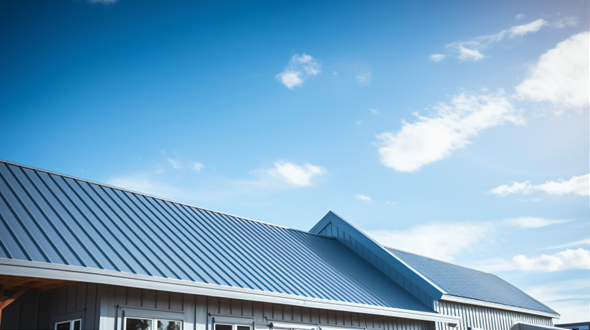
Key Takeaways
- Metal roofing offers a long lifespan, strong weather resistance, and adaptability and is made from eco-friendly, recyclable materials – often integrating well with solar panel installations.
- Metal roofing has certain drawbacks, such as higher upfront costs, louder noise during rain, and susceptibility to denting, which can be mitigated with proper installation and maintenance.
- Metal roofs provide a range of customization options, from diverse material choices like steel, aluminum, copper, and zinc to a wide color palette and various profile designs suiting different architectural styles.
The Benefits of Metal Roofing
Regarding roofing options, metal roofing stands out for its impressive lifespan, weather resistance, and eco-friendly materials. Let’s delve a bit deeper into these advantages.
1. Impressive Lifespan
Undeniably, metal roofs, including metal shingles, have a remarkable lifespan, outlasting traditional asphalt shingles for several decades. The properties of a metal roof are inclined to resist large volumes of rainwater and the typical resulting rot, mold, and mildew. This longevity reduces the need for frequent replacements, making metal roofs a sound investment for some property owners.
2. Weather and Fire Resistance
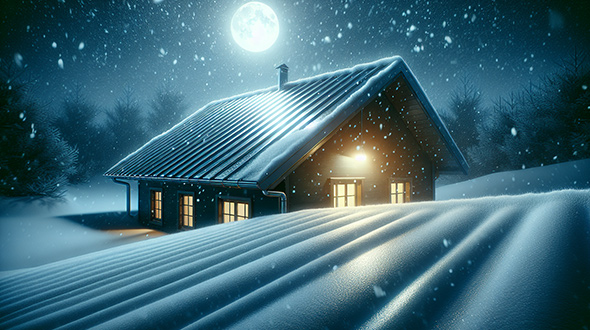
Despite the severity of weather conditions, metal roofing remains resilient. With the ability to withstand strong winds, hail, and heavy snow, metal roofs offer reliable protection for your property. Some might wonder if metal roofs attract lightning, but this concern is just a myth and should not overshadow the numerous benefits of metal roofing. In addition, metal roofing systems are noncombustible and resist fire. For this reason, properties like restaurants that have frequent open flames may want to consider the benefit of a metal roof.
3. Pitch Adaptable and Weight Efficient
Metal roofs are conducive for low-pitch roofs, whereas conventional shingles will leak when there is a minimum roof pitch. Also, metal roofing is lighter than alternate durable roofing systems, therefore not having an impact or compromising the engineering of the support structure.
4. Eco-Friendly Materials
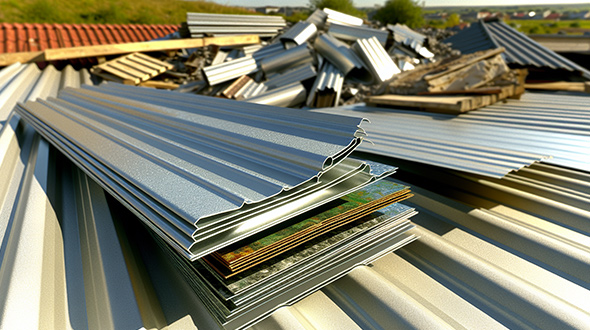
With sustainability being paramount in our modern world, metal roofs don’t disappoint. Made from eco-friendly materials, often containing a high percentage of recycled content, energy-efficiency metal roofs are also 100% recyclable at the end of their life. They also provide an ideal surface for solar panels, enhancing their eco-friendly appeal.
The Drawbacks of Metal Roofing
Despite the numerous benefits of metal roofs, there are also some cons of metal to consider. These include a higher initial cost, potential noise, susceptibility to denting, and problems arising from inept installers.
1. Higher Initial Cost
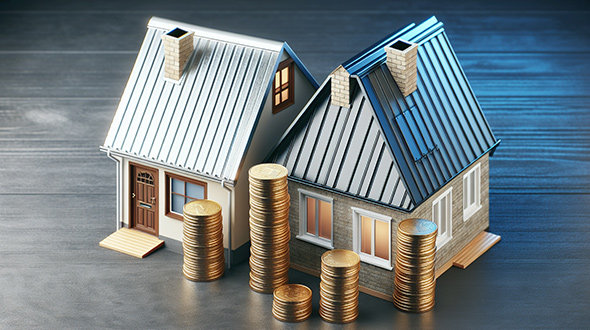
Although metal roofs offer many long-term benefits, they come with a higher upfront cost than asphalt shingles. This is their most significant con; however, their durability and energy efficiency may offset this expense over time if the property remains in possession by the same owner.
2. Noise Concerns
The sound of rain on a metal roof can be a concern but don’t be too quick to dismiss this option. With proper insulation and installation, the noise can be significantly reduced.
3. Denting and Damage
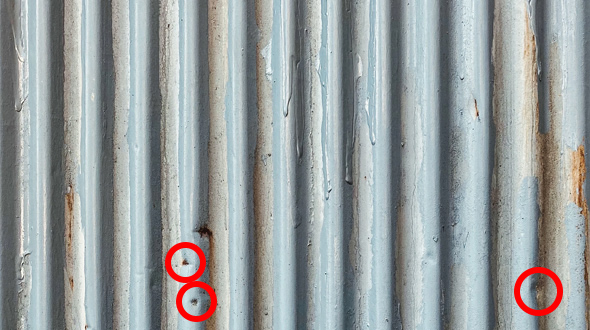
Even though metal roofs are durable, they can still sustain dents and damage from hail or falling debris. Also, the necessity to service chimneys, satellite dishes, HVAC units, vent pipes, generators, and other equipment can require technicians on your roof. Property owners with high traffic roofs be aware, however, with proper maintenance and care, this can be minimized.
Tip: In a region prone to violent hail storms, consider a heavier, thicker gauge metal to prevent severe denting and damage during storms.
4. Poor Installation Causes Leaks
Poor workmanship during installation can surely lead to a leaking roof. As the hot and cold weather causes the metal roofing system to expand and contract, causing fasteners to come loose and create space for water to penetrate the structure. Manufacturer’s instructions must be carefully followed, and an experienced and professional roofing contractor will help prevent future headaches and save you money and frustration in the long run.
Tip: A maintenance contract for your metal roof is always suggested, as the better maintained a roof is, the longer it will last.
Material Options for Metal Roofing
The diversity of metal roofing materials, including metal roofing panels, is another appealing aspect of metal roofing. These roofing material options include steel, aluminum, copper, and zinc, each with its own set of benefits and drawbacks.
Steel Roofing
Steel roofing is a popular choice due to its strength and durability. Plus, options like galvanized and Galvalume steel offer added corrosion resistance, making it an excellent choice for many properties.
Aluminum Roofing
Aluminum roofing, while more expensive than steel, is highly corrosion-resistant, making it an excellent choice for coastal areas. Plus, its lightweight nature makes it easier to install.
Copper and Zinc Roofing
Copper and zinc roofing materials offer a distinctive look for those seeking a more unique aesthetic. While they come with a higher price tag, their exceptional longevity and stunning appearance can make them worth the investment for a certain demographic.
For more insight into the costs of these metal roofing systems, see this in-depth look at metal roofing article.
Customization and Aesthetic Appeal
The broad spectrum of customization possibilities is another notable advantage of metal roofing. From color choices to profile selection, you can achieve the desired look for your property.

Color Choices
Metal roofs come in various colors, allowing you to match your roof to your property’s exterior. Whether you prefer a classic black or a vibrant red, there’s a color to suit every taste.
Profile Selection
Beyond color, the profile of your metal roof can significantly impact its overall look. Some popular profiles for metal roofs include:
- Standing seam
- Corrugated
- Ribbed
- Shingle
- Tile
From profiles that mimic traditional materials like wood shakes and clay tiles to those with a modern edge, the options are endless.
Installation Considerations and Challenges
Despite the advantages of metal roofing, there are also installation factors and challenges to consider. These include the need for professional expertise, such as hiring metal roofing pros and understanding potential restrictions from homeowners associations. In this context, it’s essential to weigh the roofing pros and cons before making a decision.
Expertise Required
Installing a metal roof is not a DIY project. It requires skilled professionals to ensure the roof is properly installed, preventing issues such as leaks or poor performance.
Potential HOA Restrictions
Before installing a metal roof, it’s important to check with your local homeowners association for any restrictions. This can save you from potential headaches down the road.
Metal Roofing in Coastal Areas
Metal roofing is a viable choice for residents of coastal areas. With corrosion-resistant materials and protective coatings, your roof can withstand the unique challenges of coastal living.
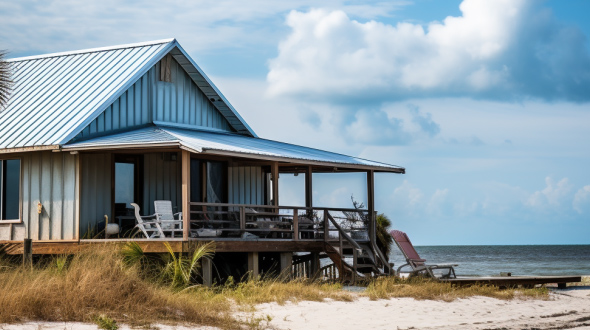
Corrosion Resistance
In coastal environments, salt air can cause rust and deterioration. However, corrosion-resistant materials like aluminum, copper, and zinc can withstand the harsh marine environment, ensuring your roof lasts for years.
Protective Coatings
Protective coatings can be applied to further enhance the corrosion resistance of your metal roof. These coatings provide an extra layer of protection against the elements, ensuring your roof remains durable and long-lasting.
Metal Roof Pros and Cons Summary
To wrap up, metal roofing offers numerous benefits, including durability, energy efficiency, and a wide range of customization options. However, it’s essential to consider potential drawbacks, such as higher initial costs and noise concerns, and to understand the installation requirements and potential HOA restrictions. For those living in coastal areas, corrosion-resistant materials and protective coatings can ensure your roof withstands the elements.
Metal Roof Frequently Asked Questions
These are a few of the most common metal roof FAQ’s:
What are the disadvantages of metal roofing?
Metal roofing can be as much as two or three times more expensive than other roofing materials, be noisy, and show inconsistent color match. It also faces the possibility of oil canning. Keep these factors in mind when considering metal roofing.
Is it worth it to put on a metal roof?
Yes, it’s worth investing in a metal roof due to its durability, longevity, potential energy savings, and increased property resale value.
Do metal roofs leak more than shingles?
No, metal roofs are less prone to leaking than shingles as long as they are installed correctly. This makes them a durable and low-maintenance choice for your roof.
What is the life expectancy of a metal roof?
On average, a metal roof can last between 40-70 years, with some materials like copper roofing lasting even longer. Multiple factors can affect the longevity of the roof.
What are the benefits of metal roofing?
Metal roofing provides durability, energy efficiency, low maintenance, and a long lifespan, making it an excellent choice for long-term protection and cost savings.
See Metal Roofing Pros and Cons for the first version of this content.